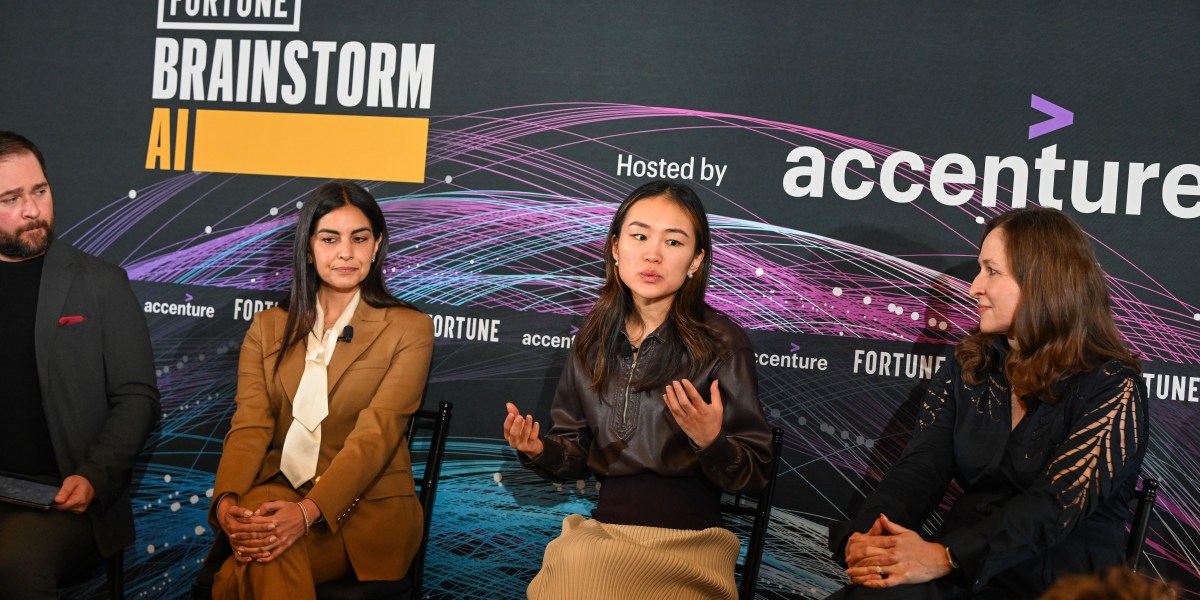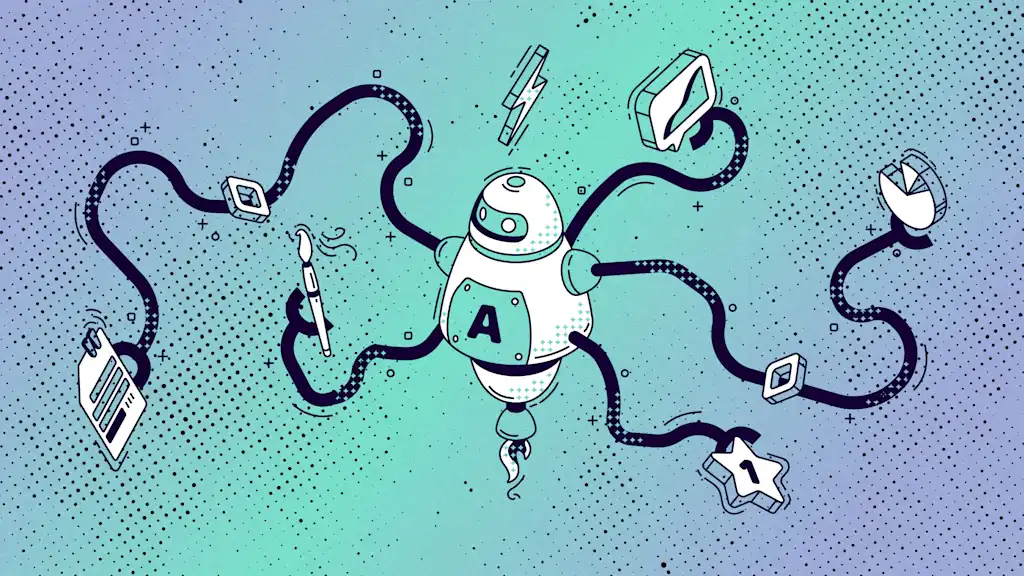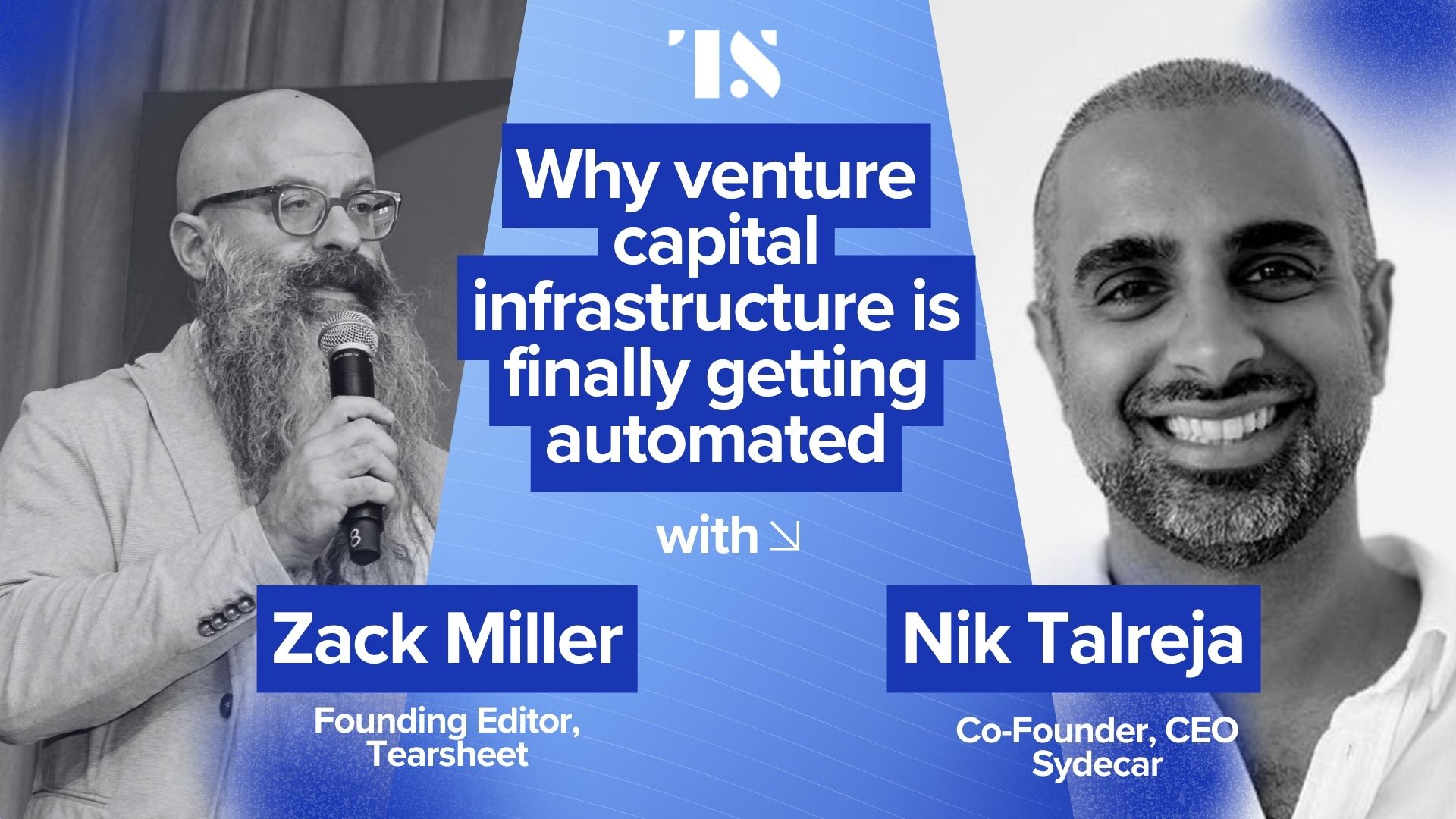#Automation
#Automation
[ follow ]
#ai #ai-agents #agentic-ai #artificial-intelligence #robotics #future-of-work #jobs #labor-market #productivity
Artificial intelligence
fromwww.housingwire.com
2 days agoRedefining mortgage operations: The profit power of AI-driven decisioning
Centralized AI decisioning automates and accelerates lending decisions, enabling rapid policy changes, uniform underwriting, fewer touchpoints, and improved margins and borrower experiences.
fromLondon Business News | Londonlovesbusiness.com
2 days agoBeyond email: 10 surprising virtual assistant services to outsource in 2025 - London Business News | Londonlovesbusiness.com
Got a podcast idea but no time to produce it? Virtual assistant services now include full podcast management. Your VA can handle audio editing, write show notes, upload episodes to platforms, and even create short clips for social media. They use tools like Descript and Adobe Premiere Pro. This saves you almost 10 hours per episode. Many CEOs are using this service to build their personal brand without touching a microphone.
Remote teams
fromNextgov.com
3 days agoMaking agentic government work: 7 principles for safer, smarter AI adoption
We are now at the point where automation, machine learning and agentic orchestration can genuinely work together. This is not theory. It is already happening in defense and civilian agencies that have moved past pilots and into production, using agents that bring context, consistency and speed to complex workflows while preserving accountability. These seven principles for an agentic government give leaders a practical framework for adopting automation and AI responsibly.
US politics
fromThe Walrus
4 days agoIf Chatbots Can Replace Writers, It's Because We Made Writing Replaceable | The Walrus
A few months ago, I went to a birthday party at a bar in Neepsend, an old industrial neighbourhood by the River Don in Sheffield. The bar had been a steelworks once, but now it was another example of the international style you find everywhere, from Portland, Oregon, to all the other Portlands in Canada, England, Australia, and New Zealand: exposed brick, steel beams, concrete floors, Edison bulbs. The steelworkers had been transformed into accountants and brand managers, the molten pig iron into £9 cocktails.
UK news
fromAzure DevOps Blog
5 days agoAzure Boards integration with GitHub Copilot - Azure DevOps Blog
The goal was simple: allow teams to take a work item from Azure Boards and send it directly to GitHub Copilot so the coding agent could begin working on it, track progress, and generate a pull request. We are happy to announce that this integration is now being rolled out as generally available 🎉. Customers who participated in the preview helped us validate the experience, find issues, and shape improvements.
DevOps
fromFortune
5 days agoCan't get a job? Blame AI? Train in 'power skills,' IBM exec says: 'You can't hire a college student now to just come in and create a spreadsheet' | Fortune
If 2023 was the year of shock and 2024 was the year of experimentation, 2025 marks the moment the corporate world finally accepted that artificial intelligence is not just a novelty-it is the new infrastructure of work. According to Justina Nixon-Saintil, IBM's Vice President of Corporate Social Responsibility and Chief Impact Officer, the conversation has fundamentally shifted from fascination to urgent integration.
Artificial intelligence
fromArs Technica
1 week agoHow OpenAI is using GPT-5 Codex to improve the AI tool itself
"The vast majority of Codex is built by Codex," OpenAI told us about its new AI coding agent. In interviews with Ars Technica this week, OpenAI employees revealed the extent to which the company now relies on its own AI coding agent, Codex, to build and improve the development tool. "I think the vast majority of Codex is built by Codex, so it's almost entirely just being used to improve itself," said Alexander Embiricos, product lead for Codex at OpenAI, in a conversation on Tuesday.
Artificial intelligence
UX design
fromMedium
2 weeks agoDesign in the Age of AI: From Execution to thought work the honest truth no one wants to say out...
AI design tools already automate executional design tasks, putting at-risk designers whose primary value is execution and forcing a shift toward higher-order contributions.
Artificial intelligence
fromFortune
1 week agoAI is taking over managers' busywork-and it's forcing companies to reset expectations | Fortune
AI adoption is flattening organizations, automating managerial tasks, enabling managers to focus on coaching and oversee larger teams while requiring new accountability structures.
Artificial intelligence
fromFast Company
1 week agoIs humanity on a collision course with AI? Why the downsides need to be reckoned with soon
Advanced AI development poses existential risks, including potential human extinction or extreme economic concentration without radical changes to current approaches.
fromFortune
1 week agoGoldman Sachs CFO on the company's AI reboot, talent, and growth | Fortune
At the Goldman Sachs U.S. Financial Services Conference on Tuesday, CFO Denis Coleman discussed the company's recently announced OneGS 3.0 initiative-a multiyear overhaul of its OneGS program aimed at integrating AI throughout the bank's operating model to reduce complexity and boost productivity. The effort is a top priority and will involve every division and function across the firm, from business lines to control functions to engineering, Coleman said. "At its core, it's an effort to drive more scale and more growth," he said.
Artificial intelligence
fromExchangewire
1 week agoAdnami Unveils Agentic Curation, Enhancing Media Buying for the Attention Era
Adnami, a leader in attention-driven digital advertising, today (10th December, 2025) announced the launch of its Agentic Curation product to create custom publisher deals and optimise campaigns fast and at scale. After a year of success delivering curation services to global brands and agencies, Adnami now takes a big leap forward by adding an agentic layer to its programmatic activation and optimisation processes.
Marketing tech
Artificial intelligence
fromFortune
1 week ago'Customers don't care about AI' - they just want to boost cash flow and make ends meet, Intuit CEO says | Fortune
Customers prioritize cash flow and business growth over AI; combining automation with human expertise delivers practical, done-for-you solutions that drive prosperity.
fromFast Company
1 week agoPepsi layoffs: Here's the biggest clue that job cuts are coming as PepsiCo looks to 'right-size' workforce
Layoffs have hit American workers hard in 2025, particularly in the government and tech sectors. Already this year, well over a million jobs have been lost due to layoffs-and unfortunately, it doesn't look like a cessation of job cuts is on the horizon. Reports say that beverage and snack giant PepsiCo is the latest major American company getting ready to announce layoffs.
US news
fromdigiday.com
2 weeks agoFuture of Marketing Briefing: AI confuses marketers but their own uncertainty runs deeper
Programmatic marketers may not understand AI but they're even more unsure of themselves. That was the undercurrent at this week's Digiday Programmatic Marketing Summit in New Orleans. Onstage discussions, offstage pow wows and the usually candid town halls all pointed to the same tension: everyone talking about AI, yet few felt equipped to shape what comes next. The dynamic landed with real force. This moment isn't about automation muscling out humans.
Artificial intelligence
Retirement
fromBusiness Insider
2 weeks agoWe're high earners with student debt and kids. Here's how we continue to build wealth.
High-earning households can preserve and build wealth through strict budgeting, automating finances, regular investing, resisting lifestyle inflation, and pursuing passive income.
DevOps
fromInfoQ
2 weeks agoScaling Cloud and Distributed Applications: Lessons and Strategies
Design cloud systems to handle unpredictable, massive traffic spikes using reserved capacity, circuit breakers, automation, performance optimization, and multi-region isolation for resilience and cost-efficiency.
Software development
fromAmazon Web Services
2 weeks agoIntroducing AWS Transform custom: Crush tech debt with AI-powered code modernization | Amazon Web Services
AWS Transform custom automates and scales language and framework modernization, reducing execution time by up to 80% and freeing developers from repetitive technical debt work.
fromTreehouse Blog
3 weeks agoPython Programming: From Beginner Basics to Real-World Projects
Python is one of the most popular programming languages for beginners because it is clear, readable, and used in almost every area of technology. Whether you want to explore automation, build simple tools, analyze data, or eventually move into machine learning, Python gives you a flexible and welcoming place to start. Many new learners begin with online coding courses to understand how Python works and why it is
Python
fromwww.bbc.com
3 weeks agoWill boats be a breakthrough for 3D printing tech?
After two years of experimentation, the material was finally right: a particular mix of thermoplastics and fibreglass that is strong, has no need of extra coating to protect it from sunlight, and is resistant to fouling and marine growth. The perfect base, says Mr Logtenberg, from which to 3D print a boat. Boats need to withstand the unforgiving nature of the marine environment.
Science
Business
fromLondon Business News | Londonlovesbusiness.com
3 weeks agoThis is the company making over $2m per employee - London Business News | Londonlovesbusiness.com
Fannie Mae, Nvidia, and Freddie Mac lead the Fortune Global 500 in profit per employee, with Fannie Mae generating over $2 million per worker.
fromwww.esquire.com
3 weeks agoI Got an AI-Powered Robot Chef to Cook My Sad Little Man Dinners. Here's Why I'm So Fond of It.
There are exactly three meal-prep foods that I have on rotation: shredded beef, shredded pork, and, you guessed it, shredded chicken. All of these involve exactly two steps: Putting spices on a meat, and putting that meat into a crockpot. Every other dinner is leftovers or sandwich meat. Author Don't say I haven't tried. During the pandemic, I went through a jerky phase. I've sampled most of the meal prep boxes.
Cooking
fromLondon Business News | Londonlovesbusiness.com
3 weeks agoUnderstanding systems in business - London Business News | Londonlovesbusiness.com
From human resources and operations to marketing and finance, systems ensure that every process, task, and decision fits into a larger framework of purpose and productivity. A well-designed business system transforms chaos into clarity, allowing teams to understand their roles, measure outcomes, and identify areas for improvement. Systems can be tangible, such as software and workflow tools, or intangible, such as organizational culture and communication protocols. Regardless of their type, their purpose remains the same: to create consistency and reliability.
Business
Marketing
fromGeeky Gadgets
4 weeks agoGemini 3 Supercharged Marketing : 9 Tools & Workflows to Outpace Rivals in 2026
Google's AI tools like Gemini, Notebook LM, and Google AI Studio accelerate marketing by centralizing data, automating tasks, generating creative assets, and enabling smarter decisions.
fromWIRED
4 weeks agoApple's Most Overlooked App Just Got a Lot Better
Adding a large language model to Shortcuts means it's easier to build automations that can simplify your life. Here's how: How This Works Head to Apple Shortcuts, create a new shortcut, and you'll see "Apple Intelligence" as one of the listed applications that's supported. There are a few Actions related to text, allowing you to do things like proofread, summarize, and make a list from text. You also get the ability to create an image, if you want.
Apple
Artificial intelligence
fromNextgov.com
1 month agoAI enhances Defense Logistics Agency's end-to-end operations, CIO says
Adoption of AI across the Defense Logistics Agency will streamline supply-chain services, enabling warfighters to concentrate on higher-level operations through automation and predictive models.
DevOps
fromTechzine Global
1 month agoHoneycomb Canvas brings AI to observability data
Canvas provides an AI-driven observability workspace that turns telemetry into actionable insights, enables natural-language exploration, automates preliminary investigations, and supports live collaborative analyses.
Artificial intelligence
fromFast Company
1 month agoSoon, anyone with enough data will be able to build a digital version of themselves. But should they?
AI-created digital twins can replicate a person's voice, writing, and decisions, enabling scaled productivity while raising identity, authenticity, and ethical concerns.
DevOps
fromSmashing Magazine
1 month agoFrom Chaos To Clarity: Simplifying Server Management With AI And Automation - Smashing Magazine
AI-ready infrastructure and automation transform reactive server management into proactive operations that preserve performance, reduce firefighting, and improve user retention.
fromIT Pro
1 month agoGartner says 'AI will touch all IT work' by 2030, and admins face a rocky road to adapt
In a new study, Gartner claimed AI will "touch all IT work by 2030" as enterprises ramp up adoption of new tools to drive productivity and alleviate strain placed on stretched IT teams. The extent of AI's influence in IT departments will vary, according to the consultancy. In a survey, CIOs said they expect around 75% of work to be done "by humans augmented with AI" by 2030, while around 25% of tasks will be carried out by AI alone.
Artificial intelligence
Business
fromTearsheet
1 month agoHow CFOs can regain strategic control in times of economic volatility ft. FIS' Chrissy Wagner and Seamus Smith - Tearsheet
CFOs must shift from quarterly planning to week-by-week management, balancing short-term risk mitigation with data-driven strategies and automation to build resilience.
Artificial intelligence
fromForbes
1 month agoSmall Business Technology Roundup: Free Tools For Google Docs, ChatGPT Surpasses 1 Million Customers, AI Replacing Workers Next Year
Free Google Docs add-ons and rapid ChatGPT adoption offer small businesses major productivity and automation gains; consider expert help to implement them.
Artificial intelligence
fromFortune
1 month agoAI requires a rethink of the apprenticeship model for knowledge professionals | Fortune
Generative AI and AI agents accelerate automation of first-year legal tasks, shifting entry-level roles toward validating AI outputs and focusing on higher-value client work.
fromWIRED
1 month agoMy Robot Vacuum Is My Only Friend
Every single day-weekend, weekday, rain or shine-whichever robot vacuum I'm currently testing starts running at 9 am. It's always a good sign. I heave a sigh of relief and continue with whatever else I was doing, content that at least that f*cking chore in my house is getting done.
Gadgets
[ Load more ]

























